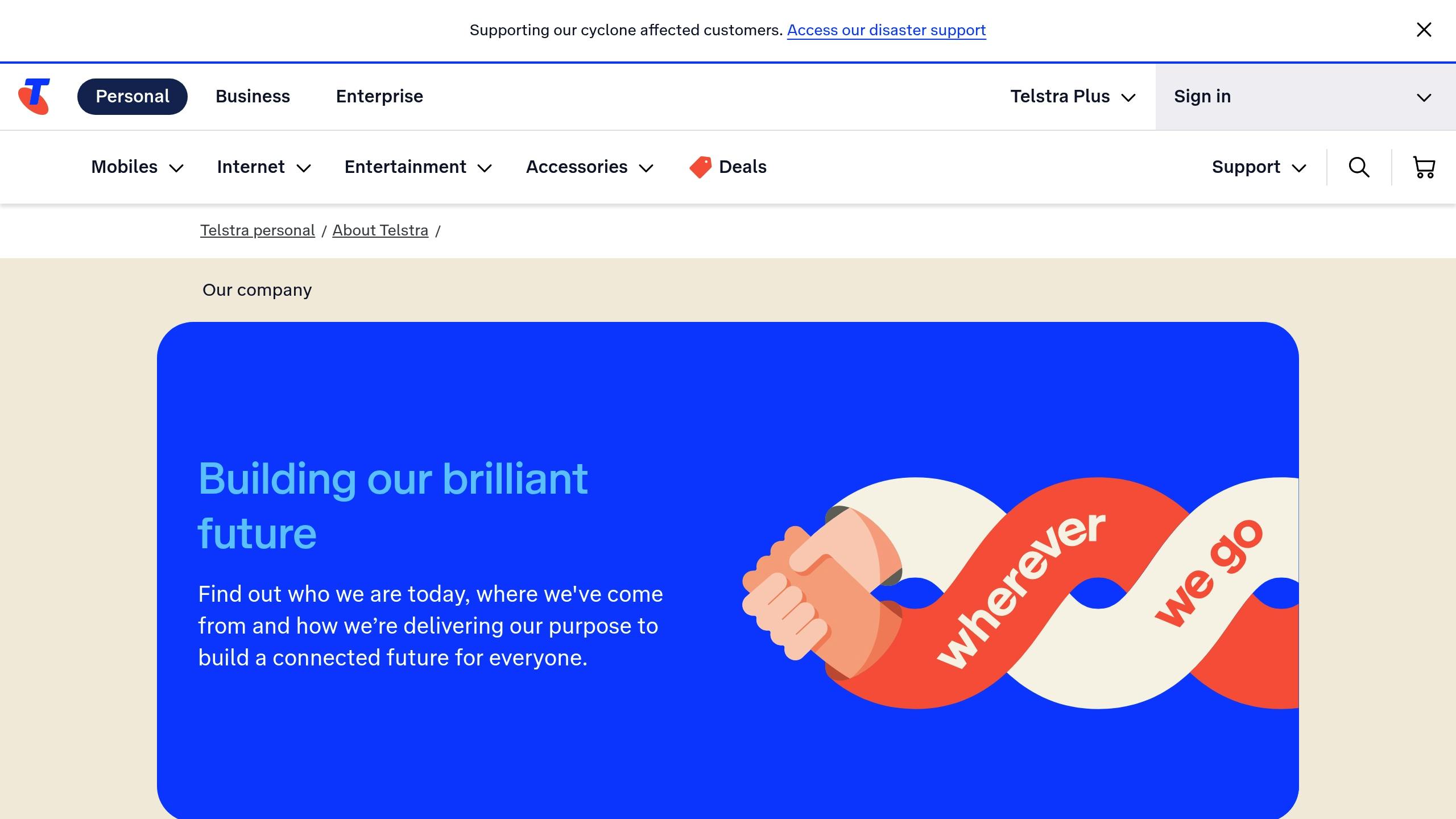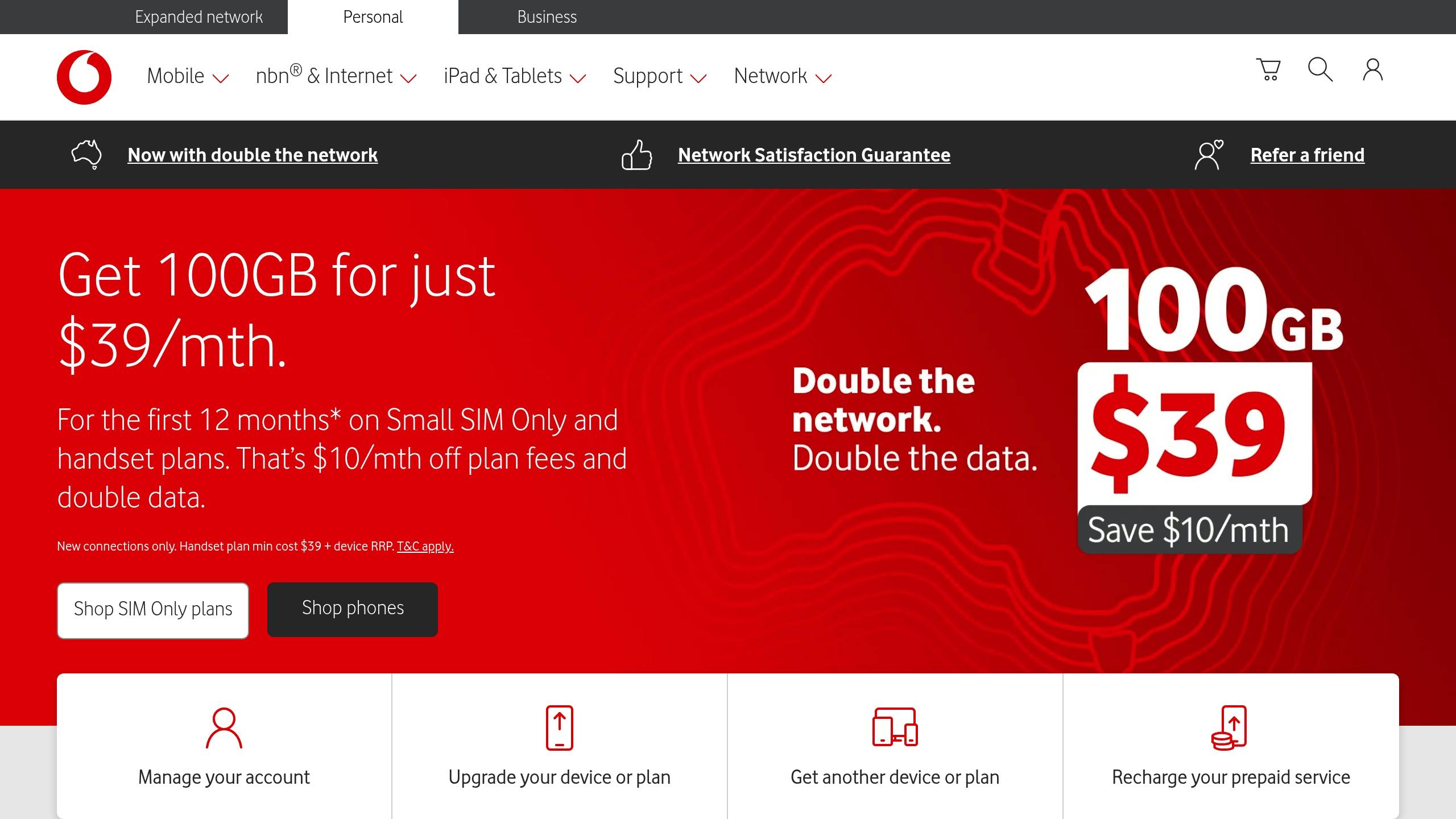When choosing a mobile carrier in Australia – Telstra, Optus, or Vodafone – understanding their 4G frequency bands is key. These bands affect coverage, indoor signal strength, and data speeds. Here’s a quick breakdown:
- Telstra: Best for rural areas with 700 MHz (Band 28) and 850 MHz (Band 5). Urban areas rely on 1800 MHz (Band 3) and high-speed 2600 MHz (Band 7).
- Optus: Balances rural and urban needs with 700 MHz (Band 28) for wide coverage and 2300 MHz (Band 40) for city capacity.
- Vodafone: Focuses on indoor coverage with 850 MHz (Band 5) and urban speeds with 1800 MHz (Band 3). Rural areas use 700 MHz (Band 28).
Quick Comparison
| Carrier | Key Low-Band (Coverage) | Key Mid-Band (Speed) | Key High-Band (Capacity) | Best For |
|---|---|---|---|---|
| Telstra | 700 MHz (Band 28) | 1800 MHz (Band 3) | 2600 MHz (Band 7) | Rural coverage |
| Optus | 700 MHz (Band 28) | 1800 MHz (Band 3) | 2300 MHz (Band 40) | Urban capacity |
| Vodafone | 700 MHz (Band 28) | 1800 MHz (Band 3) | 2100 MHz (Band 1) | Indoor coverage |
Tip: Ensure your device supports Band 28 (700 MHz) and Band 3 (1800 MHz) for compatibility across all networks. For Optus users, check for Band 40 (2300 MHz). For Vodafone, Band 5 (850 MHz) is key for indoor performance.
This guide helps you pick the right carrier based on your location and usage needs.
4G-LTE frequency band
1. Telstra 4G Network

Telstra’s 4G network operates on a mix of low-, mid-, and high-band frequencies to deliver wide coverage and fast speeds.
Here’s a breakdown of the key 4G frequency bands Telstra uses:
| Frequency Band | Band Number | Primary Use Case |
|---|---|---|
| 700 MHz | Band 28 | Extending coverage in rural areas and improving indoor signal strength |
| 850 MHz | Band 5 | Enhancing coverage in metropolitan regions |
| 1800 MHz | Band 3 | Boosting speed and capacity in urban areas |
| 2100 MHz | Band 1 | Supporting coverage in densely populated zones |
| 2600 MHz | Band 7 | Providing high-speed data in city centers |
Each band plays a specific role in ensuring optimal performance across different environments. For example, the 700 MHz band is critical for rural areas due to its ability to cover long distances and penetrate buildings effectively. In cities, Telstra focuses on the 1800 MHz and 2600 MHz bands to handle high data demands, delivering faster speeds over shorter distances.
Telstra also uses carrier aggregation to combine multiple bands, allowing for even faster data speeds. To get the best experience, your device should support at least the 700 MHz (Band 28) and 1800 MHz (Band 3) frequencies. Fortunately, most modern 4G devices are compatible with these bands.
This approach helps Telstra provide reliable coverage, balance network traffic, and scale capacity as needed.
2. Optus 4G Network

Optus provides 4G coverage across Australia using a mix of low-, mid-, and high-band frequencies. These frequencies are carefully selected to ensure reliable performance in different environments.
Here’s a breakdown of Optus’s 4G frequency bands:
| Frequency Band | Band Number | Purpose |
|---|---|---|
| 700 MHz | Band 28 | Ideal for rural coverage and getting signals through buildings |
| 900 MHz | Band 8 | Extends coverage in urban areas |
| 1800 MHz | Band 3 | Boosts speed and capacity in cities |
| 2100 MHz | Band 1 | Optimized for dense urban locations |
| 2300 MHz | Band 40 | Adds extra capacity in metro areas |
These bands work together to deliver coverage and performance tailored to urban, suburban, and rural needs.
Most modern 4G devices are compatible with Optus’s key bands, including 700 MHz (Band 28), 1800 MHz (Band 3), and 2300 MHz (Band 40). Check your device specifications to ensure compatibility with these bands for the best experience.
Here’s how the network performs based on location:
- Urban Areas: Bands 1800 MHz and 2100 MHz provide fast speeds and high capacity.
- Suburban Regions: Bands 900 MHz and 1800 MHz ensure strong, reliable coverage.
- Rural Locations: Band 700 MHz is the primary choice for wide-reaching coverage.
sbb-itb-bbcf2c3
3. Vodafone 4G Network

Vodafone uses a combination of frequency bands to provide strong coverage in both urban and rural areas.
Here’s an overview of Vodafone’s main 4G frequency bands:
| Frequency (MHz) | LTE Band | Primary Use Case |
|---|---|---|
| 850 | Band 5 | Better indoor coverage and building penetration |
| 700 | Band 28 | Wider coverage in rural and regional areas |
| 1800 | Band 3 | Faster speeds and higher capacity in cities |
In cities, the 1800 MHz band is the core of Vodafone’s network, offering fast speeds and handling high traffic. During peak times in busy areas, higher frequencies like 2600 MHz are added to meet demand.
For indoor connectivity, the 850 MHz band is key. Its longer wavelength penetrates walls more effectively, ensuring a stable connection inside buildings.
In rural and regional areas, Vodafone leans on the 700 MHz band. This frequency travels long distances and provides strong signal coverage across Australia’s vast landscapes. It’s often paired with the 850 MHz band to maintain consistent connections in less populated regions.
Most modern 4G devices are compatible with these bands. If you’re buying a new phone or tablet, make sure it supports Band 3 (1800 MHz), Band 28 (700 MHz), and Band 5 (850 MHz) for the best experience on Vodafone’s network.
This approach helps Vodafone deliver reliable 4G connectivity across Australia’s varied environments.
Network Comparison
| Carrier | Low-Band | Mid-Band | High-Band | Key Strength |
|---|---|---|---|---|
| Telstra | 700 MHz (B28) | 850 MHz (B5), 1800 MHz (B3) | 2100 MHz, 2600 MHz | Widest rural coverage |
| Optus | 700 MHz (B28) | 1800 MHz (B3) | 2100 MHz, 2300 MHz | Strong urban capacity |
| Vodafone | 700 MHz (B28) | 850 MHz (B5), 1800 MHz (B3) | 2100 MHz | Reliable indoor coverage |
The table highlights how each carrier uses frequency bands to shape their network strengths. Here’s a closer look at what these bands mean for performance:
- Coverage Priorities: All three carriers rely on the 700 MHz band (Band 28) for broad coverage. Telstra excels in rural areas by maximizing this band for long-range reach.
- Urban Coverage: In cities, mid-band frequencies play a crucial role. Telstra and Vodafone use the 850 MHz (B5) band for better signal penetration through buildings, while all carriers utilize the 1800 MHz band (B3) for a balance of coverage and capacity. Optus also employs the 2300 MHz band to handle heavy urban traffic.
- Indoor Performance: Vodafone ensures strong indoor signals with its 850 and 1800 MHz bands. Telstra combines low and mid-band frequencies to improve indoor coverage, while Optus focuses on maintaining capacity in dense urban areas.
- Device Support: Most modern 4G devices support the key 700 MHz and 1800 MHz bands. However, older or imported devices might not support specific bands like Optus’s 2300 MHz or Telstra’s 2600 MHz.
Summary and Recommendations
Based on the network comparison, here are some practical tips to help you make the right choice:
For Rural and Remote Users
Telstra stands out with its extensive use of the 700 MHz and 850 MHz bands, offering better coverage in rural areas.
For Urban Dwellers
- Optus: Leverages the 2300 MHz band, ideal for high data usage.
- Vodafone: Focuses on the 850 MHz and 1800 MHz bands, providing strong indoor signals.
- Telstra: Uses a multi-band approach for well-rounded performance.
Device Compatibility
When selecting a device, make sure it supports:
- Band 28 (700 MHz) and Band 3 (1800 MHz) for general use.
- Band 40 (2300 MHz) if you’re with Optus.
- Band 5 (850 MHz) for better indoor coverage.
Matching your device’s band compatibility with these network strategies will help you get the best 4G experience across Australia.













